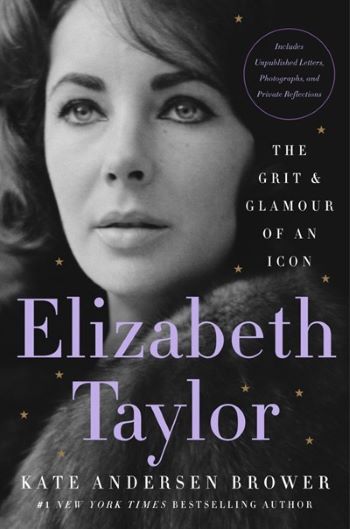[ad_1]
Elizabeth Taylor helped define the concept of global celebrity that currently dominates the pop culture landscape. She was half of one of the first celebrity power couples, paving the way for Brangelina and Bennifer, and a tireless activist during the height of the AIDS epidemic. Yet beneath all that glitz, glamour, and jewelry, she craved stability and love most of all. Kate Andersen Brower’s new biography Elizabeth Taylor: The Grit and Glamour of an Icon, the first authorized biography since the star’s death in 2011, uses documents never before shared with biographers to present the most fully realized depiction of Taylor that’s been published. By focusing on her compassion for others and her lifelong battle to be seen as a distinct individual rather than a business entity, Brower provides readers with a well-rounded portrait of Taylor. She sums it up most concisely in the afterword: “She was a very real woman whose alter ego, the commodity created when she was twelve years old, was the most famous actress during the twentieth century.”
The biography succeeds most when it contrasts Taylor’s public persona with her personal life. Without pathologizing her, Brower effectively chronicles how Elizabeth Taylor channeled the pain she experienced in her personal life into a desire to help others. Raised by a controlling mother and abusive father and fed as a child to the MGM studio system that dictated her every move, Taylor was often told what to do, where to be, and how to think. She could have become bitter and callous had she not discovered how to use her fame in the service of the greater good. A critically-acclaimed actress, public figure, and businesswoman at a time when actresses were often sidelined by powerful men, there was no blueprint to follow. She was a trailblazer, but that was never her goal: “I would rather be a good woman than a great actress.” It’s this quotation that seems to encapsulate Brower’s mission with this biography. She’s most interested in looking at who Taylor was beyond the raven hair and violet eyes—at what motivated her as a person rather than what the tabloids reported about her.
As expected (and appreciated), ample time is devoted to Taylor’s marriages, especially her first marriage to Richard Burton. One of the most compelling sections of the book revolves around Taylor’s affair with Burton during the filming of Cleopatra. Brower ties the public outrage about the affair to the tides of social change that were roaring at the time, asserting that the Taylor/Burton affair contributed to the start of the sexual revolution in the US. She also wisely points out the “lengths that the mostly male press corps went to hide President John F. Kenned’s extramarital affairs taking place at the same time,” drawing an interesting parallel about the ways women were (and continue to be) vilified for expressing their sexuality publicly. In Taylor’s refusal to apologize for her sexuality, she presented a powerful example of a public figure taking control and living on her own terms, no matter what the press said about her.
The chapters following her marriage to Burton seem to stretch on and may have benefitted from a bit more editing. For instance, a significant amount of space is devoted to Taylor’s extensive jewelry collection. It was a major part of her life and public persona, but the anecdotes about jewelry acquisition seem to slow down the narrative flow and often feel superfluous. The tone of the book is also uneven at times as if Brower had a hard time deciding who her intended audience is. At over 400 pages, it’s already a hefty read, and it could stand to be streamlined.
Of the chapters that chronicle her post-Hollywood years, the ones that are most engaging and informative revolve around Elizabeth Taylor’s AIDS activism. Almost 40 years after she lent her celebrity to the cause, she’s still the model of using fame to accomplish good in the world, as she remained “acutely aware of her physical presence and she knew that she could do things that, at the time, nobody else was capable of doing.” Even now, when talking heads love to offer thoughts and prayers after senseless tragedies, Elizabeth Taylor is the gold standard for how to take action to promote lasting change. From fundraising, to personally funding research, to testifying before Congress to urge them to take action, she tirelessly advocated for people living with HIV and AIDS when many of her famous friends didn’t understand why she was risking her reputation. She had been taken advantage of so much in her life that she couldn’t stand to see it happen to anyone else, no matter what others thought of her.
Elizabeth Taylor: The Grit and Glamour of An Icon is a work befitting one of the most famous women of the twentieth century. Delicately balancing her public and private lives, it provides readers with new insight into what made her the cultural force that continues to influence celebrity culture to the present day. Enjoyable, insightful, and eminently readable, this is an engaging read for anyone who’d like to go beyond the tabloid fodder and get a little closer to who the true Elizabeth Taylor was.

NONFICTION
Elizabeth Taylor: The Grit and Glamour of an Icon
by Kate Andersen Brower
Harper
Published on December 06, 2022

[ad_2]
Source link

